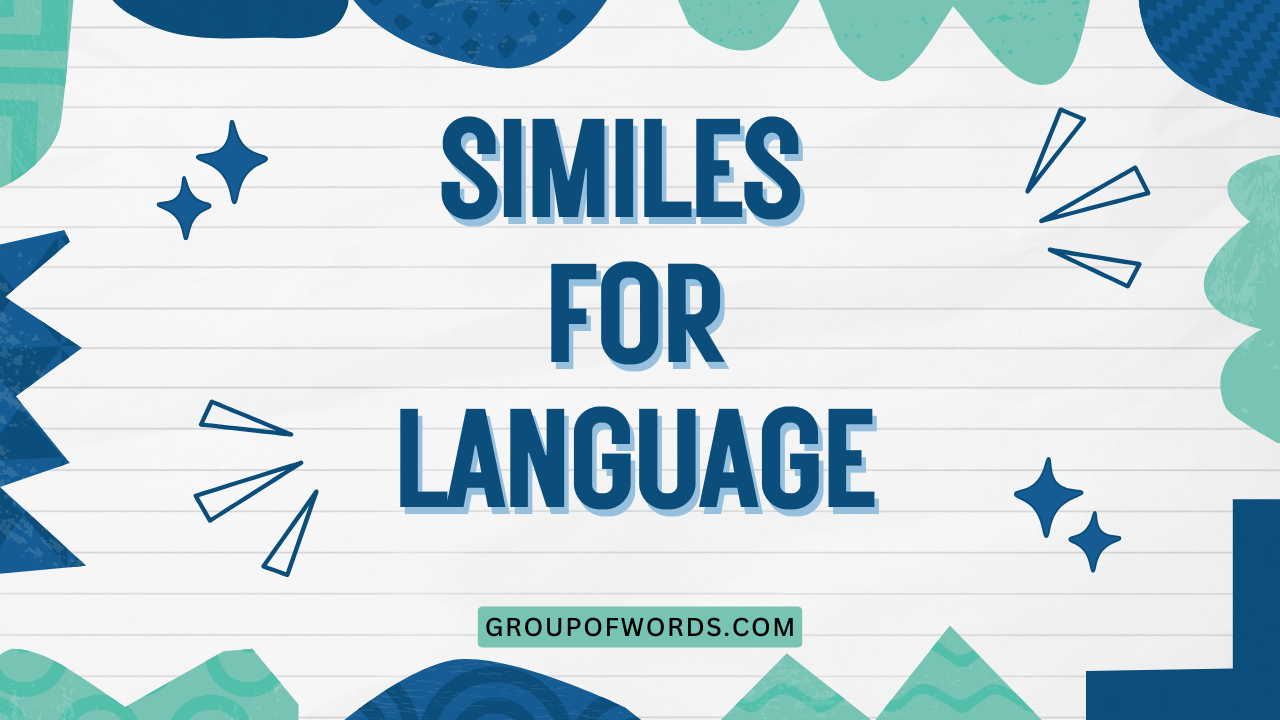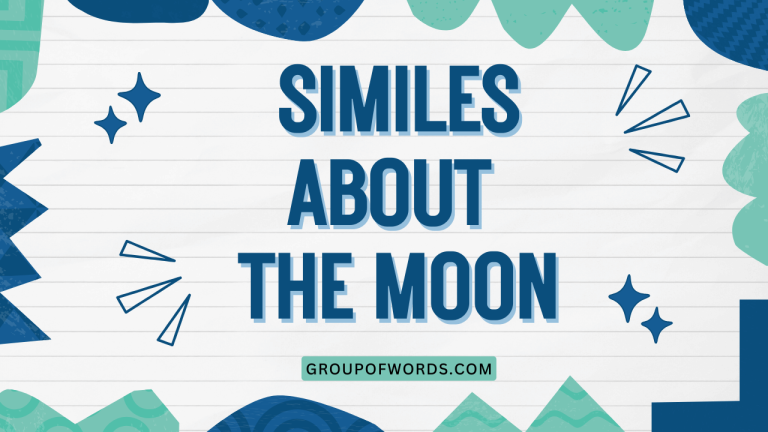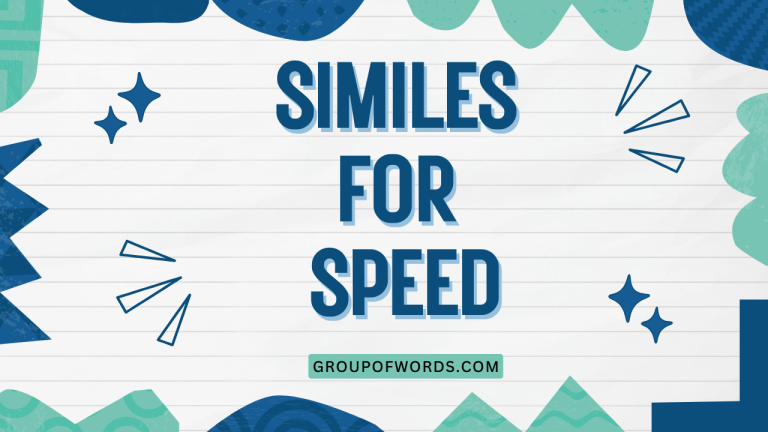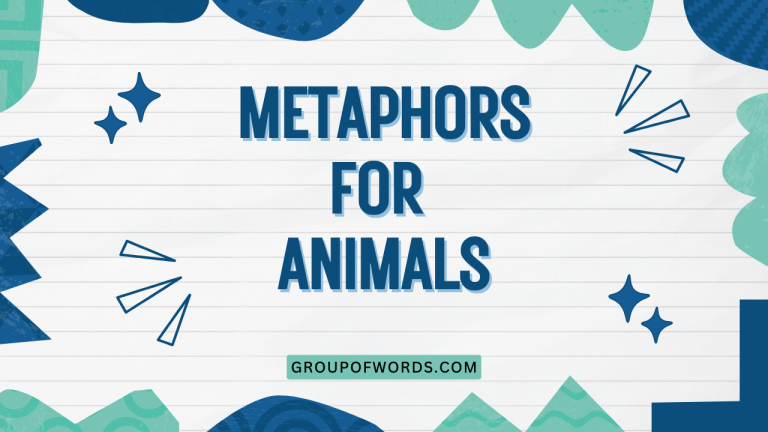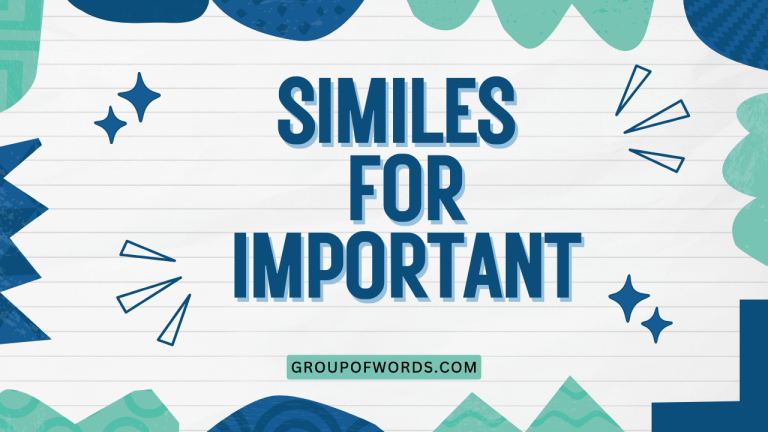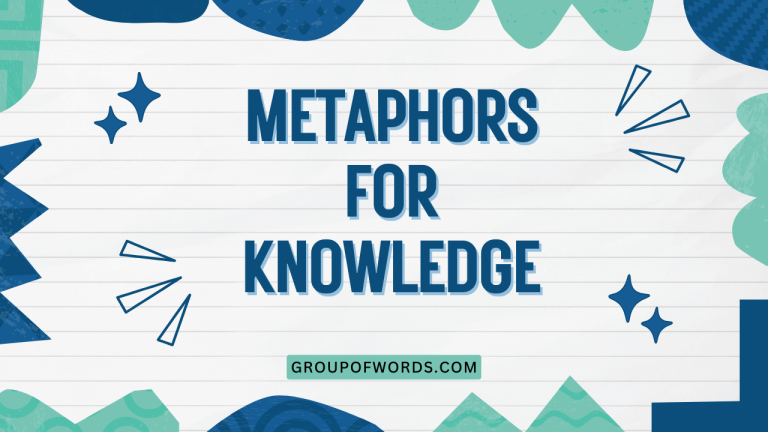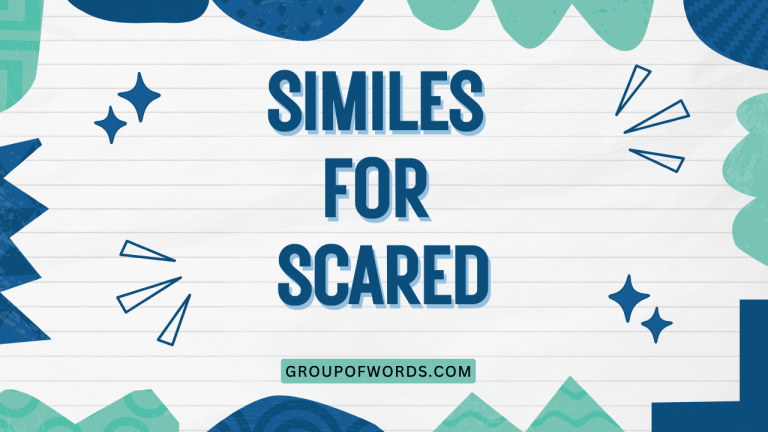Speaking Volumes: Mastering Similes for Language
Similes are a cornerstone of figurative language, enriching our communication by drawing comparisons between different things. Understanding how to use similes effectively can transform mundane sentences into vivid descriptions and engaging narratives.
This article provides a comprehensive guide to similes, covering their definition, structure, types, usage rules, common mistakes, and advanced applications. Whether you’re an English language learner, a student honing your writing skills, or simply someone who appreciates the art of language, this guide will equip you with the knowledge and practice needed to master the art of simile.
Table of Contents
- Introduction
- Definition of Simile
- Structural Breakdown of Similes
- Types of Similes
- Examples of Similes
- Usage Rules for Similes
- Common Mistakes with Similes
- Practice Exercises
- Advanced Topics in Similes
- Frequently Asked Questions (FAQ)
- Conclusion
Definition of Simile
A simile is a figure of speech that directly compares two different things, typically using the words “like” or “as.” The purpose of a simile is to create a vivid image, emphasize a particular quality, or make an abstract concept more concrete. Similes add color and depth to writing and speech, making them more engaging and memorable.
They are essential tools for writers, poets, and speakers who want to communicate effectively and creatively.
Unlike metaphors, which imply a direct equivalence (e.g., “He is a lion”), similes make an explicit comparison (e.g., “He is like a lion”). This distinction is crucial. Similes acknowledge the differences between the two things being compared while highlighting a shared characteristic. This allows for a more nuanced and often more accessible form of figurative language. The clarity of the comparison is a key feature of similes, making them a powerful tool for communication.
The function of a simile extends beyond mere comparison. It serves to illuminate, clarify, and enhance the reader’s or listener’s understanding.
By drawing parallels between familiar and unfamiliar concepts, similes can bridge gaps in understanding and create a more impactful message. They are frequently used in literature, poetry, advertising, and everyday conversation to add flair and emphasis.
Therefore, mastering similes is crucial for effective communication.
Structural Breakdown of Similes
The basic structure of a simile consists of three key elements: the subject (the thing being described), the linking word (typically “like” or “as”), and the comparative element (the thing to which the subject is being compared). Understanding these components is essential for constructing grammatically correct and effective similes.
The subject is the focus of the simile. It’s the thing you want to describe or emphasize. The linking word, “like” or “as,” explicitly indicates that a comparison is being made. And the comparative element provides the reference point for the comparison, highlighting a shared quality or characteristic. Let’s break down a simple example: “The water was as cold as ice.” Here, “water” is the subject, “as…as” are the linking words, and “ice” is the comparative element.
The “as…as” construction is often used to emphasize the degree to which the subject possesses the quality being compared. For instance, “He is as brave as a lion” suggests a very high level of bravery.
The word “like,” on the other hand, tends to create a more general comparison. For example, “She sings like an angel” indicates that her singing is beautiful and melodious, without necessarily implying the same degree of perfection that might be associated with angels.
While “like” and “as” are the most common linking words, other words and phrases can be used to create similes, although less frequently. These include “similar to,” “resembles,” and “in the same way as.” However, using “like” and “as” generally provides the clearest and most direct comparison.
The choice of linking word can subtly influence the tone and emphasis of the simile, so consider your options carefully.
Types of Similes
Similes can be categorized based on their function and the type of comparison they make. While there isn’t a strict, universally agreed-upon classification system, we can broadly distinguish between descriptive similes, emphatic similes, and ironic similes.
Understanding these categories can help you choose the most appropriate type of simile for your specific purpose.
Descriptive Similes
Descriptive similes focus on providing a vivid and detailed description of the subject. They aim to create a clear mental image for the reader or listener by comparing the subject to something familiar and easily imaginable.
These similes often appeal to the senses, evoking sights, sounds, smells, tastes, and textures.
For example, “The sky was as blue as the ocean” is a descriptive simile that appeals to the sense of sight. It creates a clear image of a vibrant blue sky.
Similarly, “Her voice was like velvet” appeals to the sense of touch, suggesting a smooth and luxurious quality to her voice. Descriptive similes are particularly useful in creative writing and poetry.
Emphatic Similes
Emphatic similes are used to emphasize a particular quality or characteristic of the subject. They go beyond simple description to highlight the intensity or significance of the attribute being compared.
These similes often use strong or dramatic comparisons to create a powerful effect.
For instance, “He fought like a cornered tiger” is an emphatic simile that emphasizes the ferocity and determination of his fighting. The comparison to a cornered tiger suggests that he is fighting with desperation and aggression.
Another example is “She was as stubborn as a mule,” which strongly emphasizes her unwavering determination. Emphatic similes are common in persuasive writing and speeches.
Ironic Similes
Ironic similes use comparison to create a sense of irony or humor. They often compare the subject to something that is unexpected or inappropriate, creating a contrast that highlights the absurdity or incongruity of the situation.
These similes can be used to make a point in a subtle and often humorous way.
For example, “He was about as helpful as a screen door on a submarine” is an ironic simile that suggests he was completely useless. The comparison to a screen door on a submarine highlights the absurdity of his attempting to be helpful in that situation.
Another example is “That idea is about as useful as a chocolate teapot.” Ironic similes are often used in satire and comedy.
Examples of Similes
Here are numerous examples of similes, categorized for clarity. These examples illustrate the different ways similes can be used to enhance writing and speech.
Table 1: Similes Describing Appearance
This table provides similes that focus on describing the physical appearance of people or objects.
| Simile | Explanation |
|---|---|
| Her eyes were as blue as the summer sky. | Describes the color of her eyes. |
| He was as tall as a tree. | Describes his height. |
| The building was as white as snow. | Describes the color of the building. |
| Her skin was like porcelain. | Describes the texture and appearance of her skin. |
| His hair was as black as night. | Describes the color of his hair. |
| The gem sparkled like a star. | Describes the brilliance of the gem. |
| She was as radiant as the sun. | Describes her glowing appearance. |
| He looked as pale as a ghost. | Describes his lack of color. |
| The road was as narrow as a ribbon. | Describes the width of the road. |
| Her dress flowed like water. | Describes the movement of her dress. |
| His muscles were as hard as rocks. | Describes the firmness of his muscles. |
| She was as thin as a rail. | Describes her slender figure. |
| The old book was as fragile as glass. | Describes the delicate nature of the book. |
| His smile was as bright as day. | Describes the radiance of his smile. |
| The lake was as smooth as glass. | Describes the calmness of the lake. |
| Her laughter was like music. | Describes the pleasant sound of her laughter. |
| He was as strong as an ox. | Describes his strength. |
| The flowers were as colorful as a rainbow. | Describes the variety of colors in the flowers. |
| She moved as gracefully as a swan. | Describes her elegant movements. |
| The clouds were like cotton candy. | Describes the fluffy appearance of the clouds. |
| His beard was as white as snow. | Describes the color of his beard. |
| The baby’s skin was as soft as silk. | Describes the texture of the baby’s skin. |
| The mountains stood as tall as giants. | Describes the height of the mountains. |
| Her voice was as clear as a bell. | Describes the clarity of her voice. |
| The dew drops sparkled like diamonds. | Describes the brilliance of the dew drops. |
Table 2: Similes Describing Behavior and Personality
This table provides similes that focus on describing the behavior and personality of people.
| Simile | Explanation |
|---|---|
| He eats like a pig. | Describes his messy eating habits. |
| She is as quiet as a mouse. | Describes her shyness and lack of noise. |
| He works like a dog. | Describes his hard work and dedication. |
| She sings like an angel. | Describes her beautiful singing voice. |
| He sleeps like a log. | Describes his deep and undisturbed sleep. |
| She is as brave as a lion. | Describes her courage and fearlessness. |
| He is as sly as a fox. | Describes his cunning and trickery. |
| She is as innocent as a lamb. | Describes her purity and naivety. |
| He is as stubborn as a mule. | Describes his unwillingness to change his mind. |
| She is as busy as a bee. | Describes her constant activity and productivity. |
| He follows instructions like a robot. | Describes his mechanical and unthinking obedience. |
| She gossips like a magpie. | Describes her excessive talking about others. |
| He complains like a stuck record. | Describes his repetitive and annoying complaints. |
| She panics like a headless chicken. | Describes her chaotic and irrational behavior in stressful situations. |
| He remembers everything like an elephant. | Describes his excellent memory. |
| She forgets things like a sieve. | Describes her poor memory. |
| He drinks like a fish. | Describes his excessive alcohol consumption. |
| She swims like a dolphin. | Describes her graceful and efficient swimming. |
| He runs like the wind. | Describes his speed and agility. |
| She dances like a dream. | Describes her beautiful and effortless dancing. |
| He argues like a lawyer. | Describes his skilled and persuasive argumentation. |
| She negotiates like a pro. | Describes her expertise in negotiation. |
| He leads like a shepherd. | Describes his caring and guiding leadership. |
| She protects her children like a lioness. | Describes her fierce and protective maternal instincts. |
| He adapts to change like a chameleon. | Describes his ability to adjust to new situations. |
Table 3: Similes Describing Feelings and Emotions
This table provides similes that focus on describing feelings and emotions.
| Simile | Explanation |
|---|---|
| He was as happy as a clam. | Describes his extreme happiness. |
| She was as sad as a rainy day. | Describes her deep sadness. |
| He was as angry as a hornet. | Describes his intense anger. |
| She felt like a fish out of water. | Describes her feeling of being uncomfortable and out of place. |
| He was as nervous as a long-tailed cat in a room full of rocking chairs. | Describes his extreme nervousness. |
| She felt like she was walking on air. | Describes her feeling of elation and happiness. |
| He was as cool as a cucumber. | Describes his calm and composed demeanor. |
| She felt as light as a feather. | Describes her feeling of freedom and relief. |
| He felt like he had been hit by a truck. | Describes his feeling of exhaustion and pain. |
| She felt as empty as a hollow shell. | Describes her feeling of emptiness and sadness. |
| He was as surprised as if he’d seen a ghost. | Describes his shock and astonishment. |
| She felt like she was drowning in sorrow. | Describes the overwhelming nature of her grief. |
| He was as excited as a child on Christmas morning. | Describes his intense anticipation and joy. |
| She felt like she was trapped in a cage. | Describes her feeling of being confined and restricted. |
| He was as scared as a rabbit caught in headlights. | Describes his intense fear. |
| She felt like she was floating on a cloud. | Describes her feeling of peace and tranquility. |
| He was as restless as a hummingbird. | Describes his inability to stay still. |
| She felt as heavy as lead. | Describes her feeling of burden and sadness. |
| He was as suspicious as a detective. | Describes his distrustful nature. |
| She felt like she was walking through treacle. | Describes her feeling of struggling and being slowed down. |
| He was as lonely as a cloud. | Describes his profound sense of isolation. |
| She felt as though a weight had been lifted. | Describes her feeling of relief. |
| He was as relaxed as a cat in the sun. | Describes his comfort and ease. |
| She felt like she was on top of the world. | Describes her feeling of success and happiness. |
| He was as eager as a beaver. | Describes his enthusiasm and diligence. |
Table 4: Similes Describing Situations and Events
This table provides similes that focus on describing situations and events.
| Simile | Explanation |
|---|---|
| The argument escalated like a wildfire. | Describes the rapid spread of the argument. |
| The news spread like lightning. | Describes how quickly the news traveled. |
| The project failed like a house of cards. | Describes the complete and sudden collapse of the project. |
| The city was as quiet as a graveyard. | Describes the eerie silence of the city. |
| The traffic moved as slow as molasses. | Describes the extremely slow pace of the traffic. |
| The rain fell like tears. | Describes the gentle and sorrowful nature of the rain. |
| The economy is as stable as a house of cards. | Describes the precariousness of the economy. |
| Her career took off like a rocket. | Describes the rapid ascent of her career. |
| The situation is as clear as mud. | Describes the confusing and unclear nature of the situation. |
| The meeting dragged on like a bad dream. | Describes the unpleasant and seemingly endless duration of the meeting. |
| The atmosphere was as tense as a drawn bow. | Describes the high level of tension in the atmosphere. |
| The challenge seemed as insurmountable as a mountain. | Describes the difficulty of the challenge. |
| The concert was as loud as a jet engine. | Describes the extreme volume of the concert. |
| The party was as lively as a carnival. | Describes the vibrant and energetic atmosphere of the party. |
| The silence was as thick as fog. | Describes the heavy and oppressive nature of the silence. |
| The task was as easy as pie. | Describes the simplicity of the task. |
| The journey was as long as a lifetime. | Describes the seemingly endless duration of the journey. |
| The game was as exciting as a rollercoaster. | Describes the thrilling nature of the game. |
| The recovery was as slow as a snail’s pace. | Describes the extremely slow progress of the recovery. |
| The transition was as smooth as silk. | Describes the seamless and effortless nature of the transition. |
| The process was as complicated as rocket science. | Describes the complexity of the process. |
| The project was as ambitious as landing on Mars. | Describes the grand scale and audacity of the project. |
| The competition was as fierce as a battle. | Describes the intensity and aggressiveness of the competition. |
| The relationship blossomed like a flower. | Describes the beautiful and gradual development of the relationship. |
| The problem was as persistent as a mosquito. | Describes the annoying and unrelenting nature of the problem. |
Usage Rules for Similes
Using similes effectively requires adherence to certain rules. These rules ensure clarity, appropriateness, and impact.
Paying attention to these guidelines will help you avoid common mistakes and create compelling comparisons.
1. Clarity: The comparison should be clear and easily understood. Avoid obscure or overly complex references. The audience should immediately grasp the connection between the subject and the comparative element. If the comparison is too abstract or unfamiliar, the simile will lose its effectiveness.
2. Relevance: The quality being compared should be relevant and meaningful. Don’t make comparisons that are arbitrary or illogical. The shared characteristic between the subject and the comparative element should be significant and contribute to the overall meaning of the sentence. Irrelevant comparisons can be confusing and distracting.
3. Originality: Strive for originality and avoid clichés. Overused similes, such as “as busy as a bee” or “as strong as an ox,” can sound uninspired and predictable. Try to come up with fresh and creative comparisons that will surprise and delight your audience. Original similes are more likely to make a lasting impression.
4. Appropriateness: The simile should be appropriate for the context and tone of your writing or speech. Avoid using similes that are offensive, insensitive, or in poor taste. Consider your audience and the purpose of your communication when choosing a simile. A well-chosen simile can enhance your message, while an inappropriate one can undermine it.
5. Consistency: Ensure that the simile is consistent with the overall style and voice of your writing. Avoid mixing metaphors and similes, as this can create a jarring effect. Maintain a consistent tone and level of formality throughout your piece. A well-integrated simile will seamlessly blend into the surrounding text.
6. Avoid Overuse: While similes can be effective, avoid overusing them. Too many similes in a short space can make your writing sound contrived and repetitive. Use similes sparingly and strategically to maximize their impact. A few well-chosen similes are more effective than a barrage of mediocre ones.
Common Mistakes with Similes
Even experienced writers sometimes make mistakes when using similes. Recognizing these common errors can help you avoid them in your own writing.
1. Confusing Similes with Metaphors: The most common mistake is confusing similes with metaphors. Remember that similes use “like” or “as” to make an explicit comparison, while metaphors imply a direct equivalence.
* Incorrect (Metaphor): “He is a lion in battle.”
* Correct (Simile): “He is like a lion in battle.”
2. Using Clichés: Overusing clichés makes your writing sound unoriginal.
* Incorrect (Cliché): “She was as blind as a bat.”
* Correct (Original): “She navigated the dark room as if her eyes were covered.”
3. Illogical Comparisons: Making comparisons that don’t make sense.
* Incorrect (Illogical): “The car was as loud as a flower.”
* Correct (Logical): “The car was as loud as a jet engine.”
4. Overcomplicating Similes: Making the simile too complex or obscure.
* Incorrect (Overcomplicated): “His argument was like the quantum entanglement of two subatomic particles, defying classical understanding.”
* Correct (Simple): “His argument was as confusing as a maze.”
5. Inappropriate Tone: Employing similes that clash with the tone of the writing.
* Incorrect (Inappropriate): “The funeral was as fun as a party.”
* Correct (Appropriate): “The funeral was as somber as a cloudy day.”
Practice Exercises
Test your understanding of similes with these practice exercises. Each question requires you to either identify the simile, correct an incorrect simile, or create your own simile based on a given prompt.
Exercise 1: Identifying Similes
In each sentence, identify the simile. Underline the simile and identify the two things being compared.
| Question | Answer |
|---|---|
| 1. The snow fell like a soft blanket. | The snow fell like a soft blanket. (Snow, blanket) |
| 2. His anger was a raging fire. | No simile. This is a metaphor. |
| 3. She was as graceful as a swan. | She was as graceful as a swan. (She, swan) |
| 4. The city was a jungle. | No simile. This is a metaphor. |
| 5. He ran as fast as the wind. | He ran as fast as the wind. (He, wind) |
| 6. The children behaved like wild animals. | The children behaved like wild animals. (Children, wild animals) |
| 7. Her smile was the sun. | No simile. This is a metaphor. |
| 8. The old house stood like a lonely sentinel. | The old house stood like a lonely sentinel. (Old house, sentinel) |
| 9. The music washed over me like a warm bath. | The music washed over me like a warm bath. (Music, warm bath) |
| 10. The politician was a snake. | No simile. This is a metaphor. |
Exercise 2: Correcting Incorrect Similes
Correct the following sentences to create effective similes. Explain the error in the original sentence.
| Question | Answer | Explanation |
|---|---|---|
| 1. The coffee was as loud as a trumpet. | The coffee was as strong as an espresso. | Loudness is not a quality of coffee. |
| 2. He was as slow as a cheetah. | He was as slow as a snail. | Cheetahs are known for their speed, not slowness. |
| 3. The book was as heavy as a feather. | The book was as heavy as a brick. | Feathers are light, not heavy. |
| 4. She was as bright as the night. | She was as bright as the sun. | Night is dark, not bright. |
| 5. The ice was as warm as fire. | The ice was as cold as the arctic. | Fire is hot, not warm. |
| 6. The solution was as clear as a fog. | The solution was as clear as crystal. | A fog obscures visibility. |
| 7. His temper was as calm as a storm. | His temper was as volatile as a storm. | Storms are turbulent, not calm. |
| 8. The journey was as short as an epoch. | The journey was as short as a sprint. | Epochs are long periods of time. |
| 9. The food was as delicious as dirt. | The food was as delicious as nectar. | Dirt is unpalatable. |
| 10. The music was as silent as thunder. | The music was as deafening as thunder. | Thunder is loud, not silent. |
Exercise 3: Creating Similes
Create a simile for each of the following prompts. Be creative and original.
| Prompt | Possible Answer |
|---|---|
| 1. Describe a crowded room. | The room was as packed as a sardine can. |
| 2. Describe a difficult task. | The task was as daunting as climbing Mount Everest. |
| 3. Describe a beautiful sunset. | The sunset looked like a painting. |
| 4. Describe a feeling of relief. | The relief washed over me like a cold shower. |
| 5. Describe someone who is very organized. | He was as organized as a computer. |
| 6. Describe a boring lecture. | The lecture was as dry as the desert. |
| 7. Describe a complicated problem. | The problem was as complex as a spider web. |
| 8. Describe someone who is very generous. | She was as generous as Santa Claus. |
| 9. Describe a quiet forest. | The forest was as still as a sleeping giant. |
| 10. Describe a delicious meal. | The meal was like a symphony on my tongue. |
Advanced Topics in Similes
For advanced learners, exploring more nuanced aspects of similes can further enhance their writing skills. This includes understanding extended similes, using similes for symbolism, and recognizing cultural variations in simile usage.
1. Extended Similes: An extended simile is a simile that is developed over several lines or even a paragraph. This allows for a more detailed and complex comparison, creating a richer and more vivid image. Extended similes are often used in poetry and prose to create a particular mood or atmosphere. They can also be used to explore the deeper meaning of a subject by drawing multiple parallels between it and the comparative element.
2. Similes for Symbolism: Similes can be used to imbue a subject with symbolic meaning. By comparing the subject to something that carries a particular symbolic weight, the writer can evoke deeper layers of meaning. For example, comparing a character to a dove might symbolize peace and innocence, while comparing a situation to a storm might symbolize conflict and turmoil.
3. Cultural Variations: Simile usage can vary across different cultures and languages. Some comparisons may be more common or more meaningful in certain cultural contexts than others. Understanding these cultural variations can help you avoid misunderstandings and create similes that resonate with a specific audience. It’s important to be aware of the cultural connotations of the comparative elements you choose.
Frequently Asked Questions (FAQ)
Here are some frequently asked questions about similes, along with detailed answers.
1. What is the difference between a simile and a metaphor?
A simile is a comparison using “like” or “as,” while a metaphor implies direct equivalence without those words. Similes acknowledge differences, while metaphors assert a shared identity.
For example, “He is like a lion” (simile) versus “He is a lion” (metaphor).
2. Can a simile be a cliché?
Yes, similes can become clichés if they are overused. Common examples include “as busy as a bee” and “as strong as an ox.” To avoid clichés, strive for originality and create fresh comparisons.
3. How can I make my similes more creative?
To create more creative similes, think outside the box and consider unusual or unexpected comparisons. Draw on your personal experiences, observations, and knowledge to come up with unique and memorable similes.
Don’t be afraid to experiment and play with language.
4. What is an extended simile?
An extended simile is a simile that is developed over several lines or a paragraph. It allows for a more detailed and complex comparison, creating a richer and more vivid image.
Extended similes are often used in poetry and prose.
5. Can similes be used in formal writing?
Yes, similes can be used in formal writing, but they should be used sparingly and appropriately. Choose similes that are clear, relevant, and consistent with the tone of your writing.
Avoid using overly informal or colloquial comparisons.
6. How do I avoid making illogical comparisons in my similes?
To avoid illogical comparisons, ensure that there is a clear and meaningful connection between the subject and the comparative element. Ask yourself whether the comparison makes sense and whether it effectively conveys the intended meaning.
If the comparison feels forced or arbitrary, it’s probably best to choose a different one.
7. What is the best way to practice using similes?
The best way to practice using similes is to write regularly and experiment with different comparisons. Pay attention to the similes used by other writers and speakers, and try to identify what makes them effective.
You can also try creating similes for everyday objects, situations, and emotions.
8. Are there any cultures where similes are not used as frequently?
While figurative language exists across cultures, the specific types and frequency of use can vary. Some cultures may prefer more direct communication styles, using similes and metaphors less frequently.
However, it’s rare to find a culture where figurative language is completely absent.
Conclusion
Mastering similes is an essential skill for anyone who wants to enhance their communication and writing abilities. By understanding the definition, structure, types, and usage rules of similes, you can create more vivid, engaging, and impactful messages.
Remember to avoid common mistakes, practice regularly, and strive for originality. With dedication and effort, you can become a master of simile and unlock the full potential of this powerful figure of speech.
The journey to mastering similes involves understanding their fundamental components and practicing their application in diverse contexts. By continually honing your
skill, you can transform your writing and speech into a captivating and expressive art form.
Embrace the challenge, explore the possibilities, and let your creativity soar as you craft similes that illuminate, inspire, and resonate with your audience.
